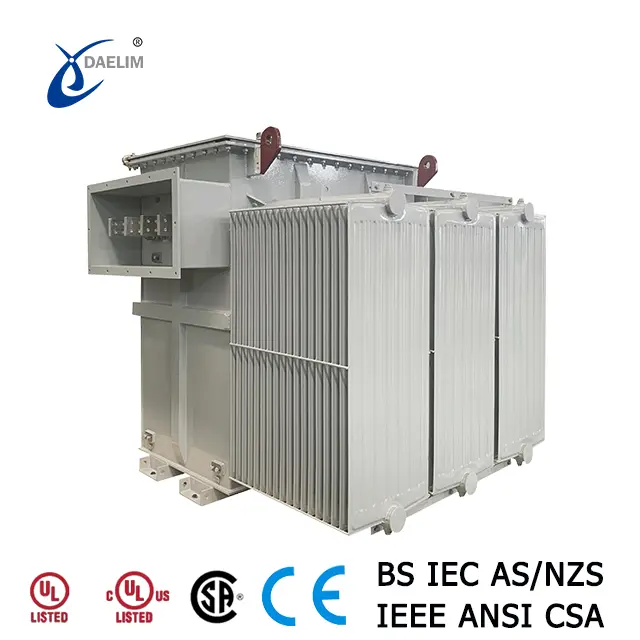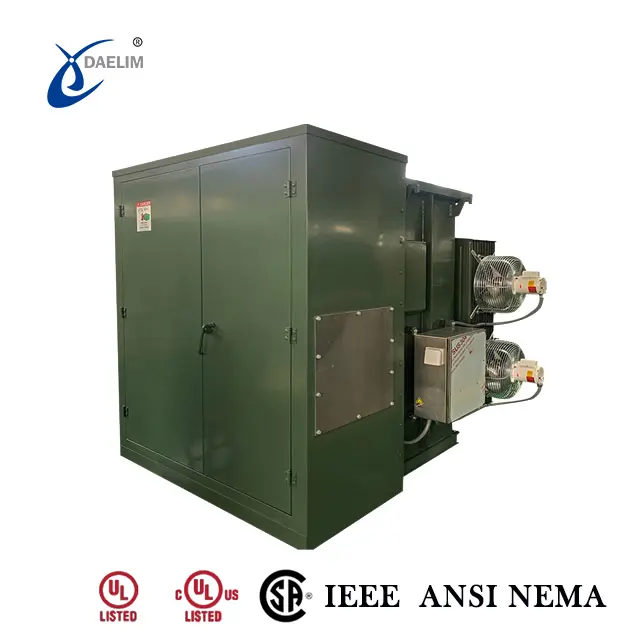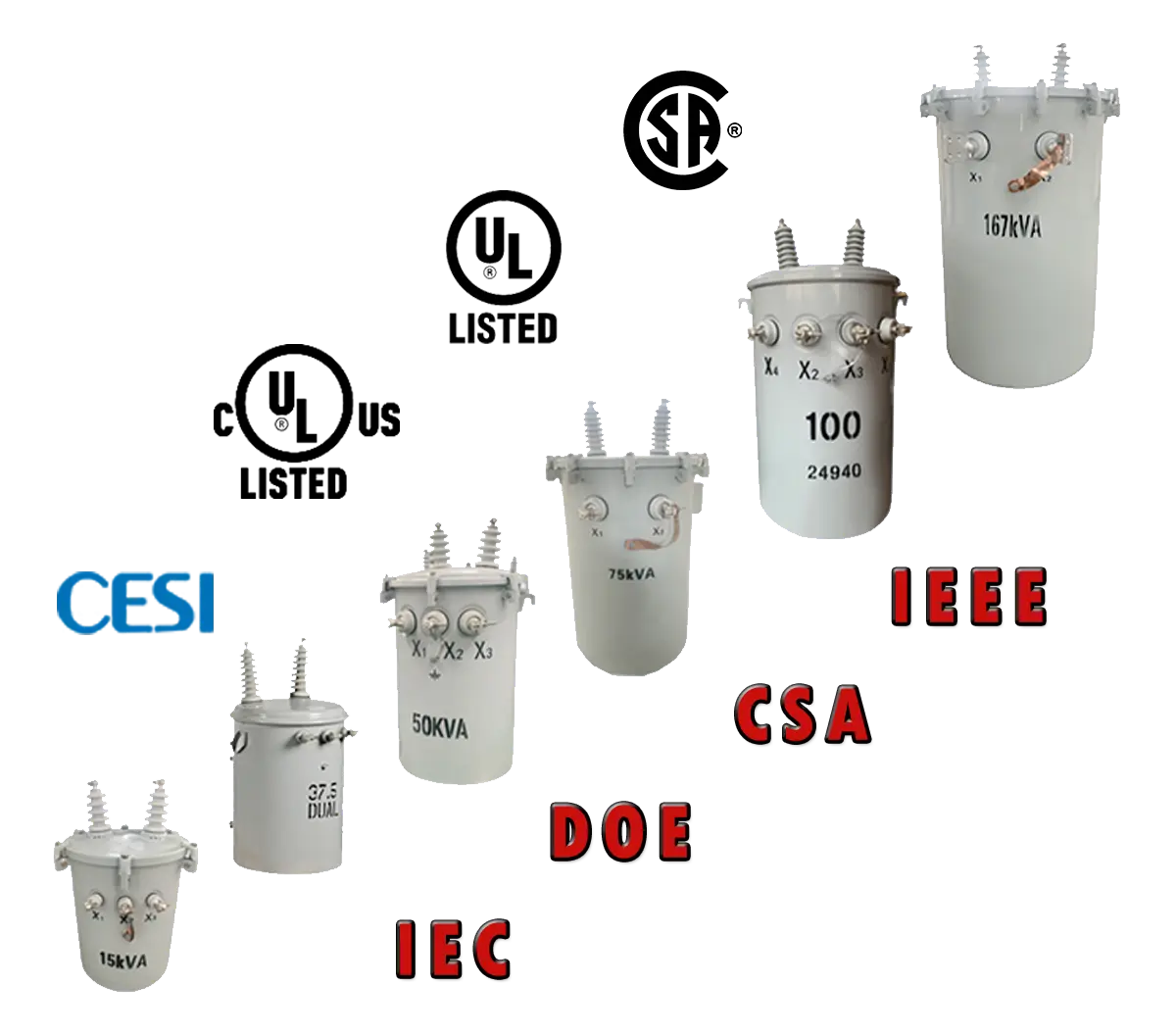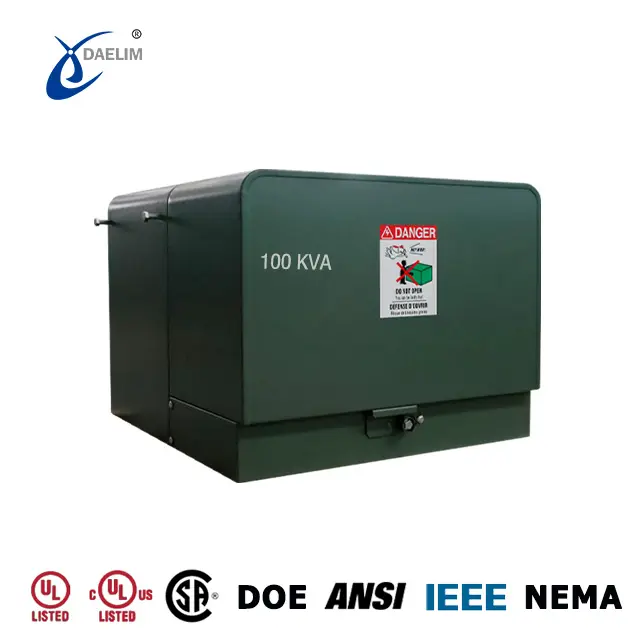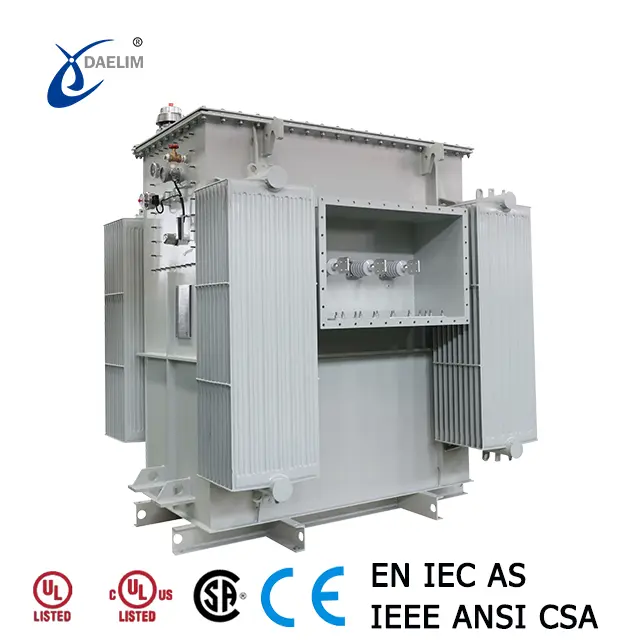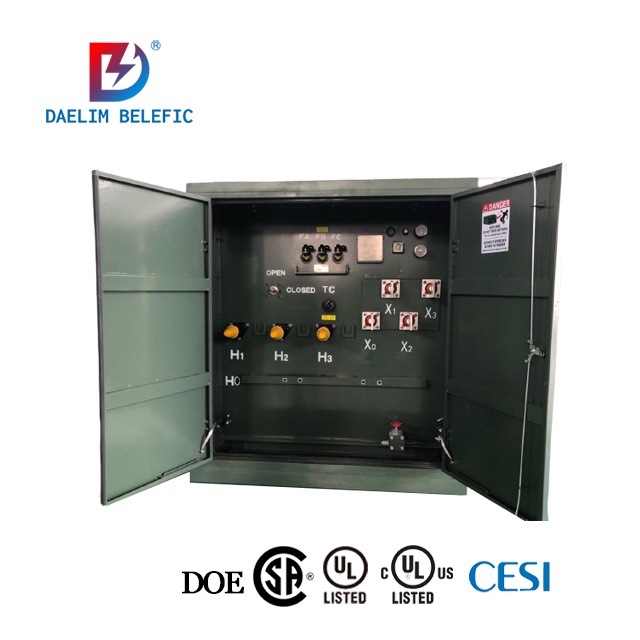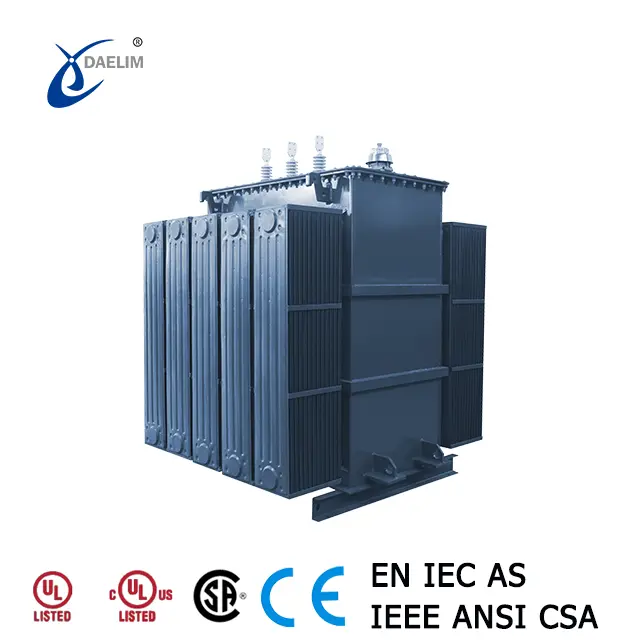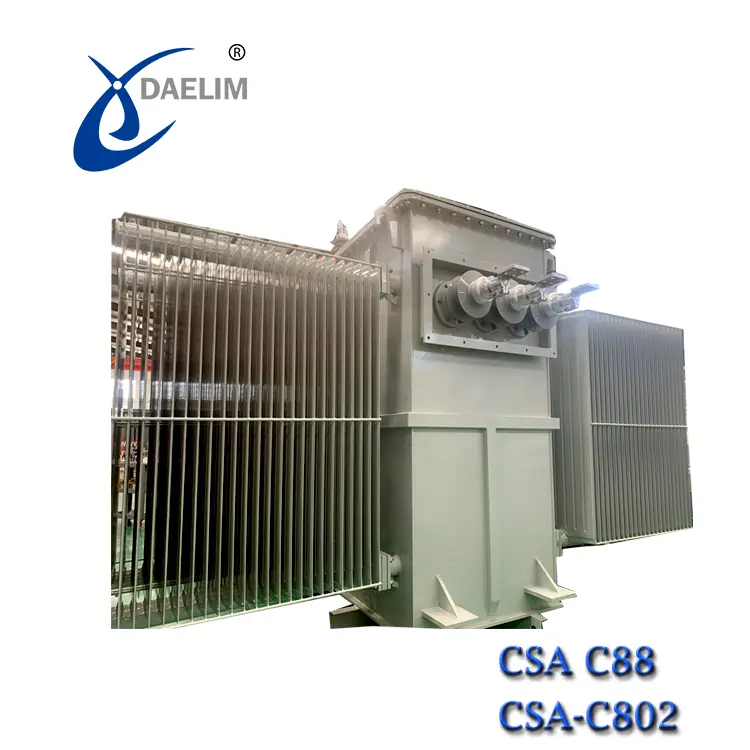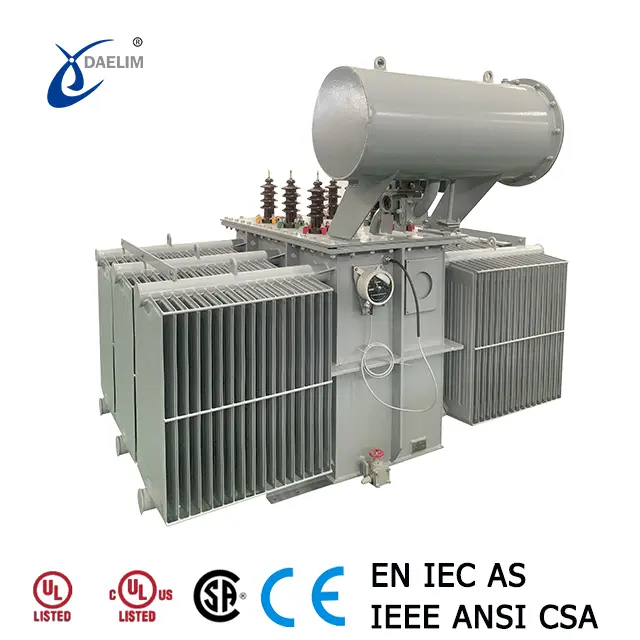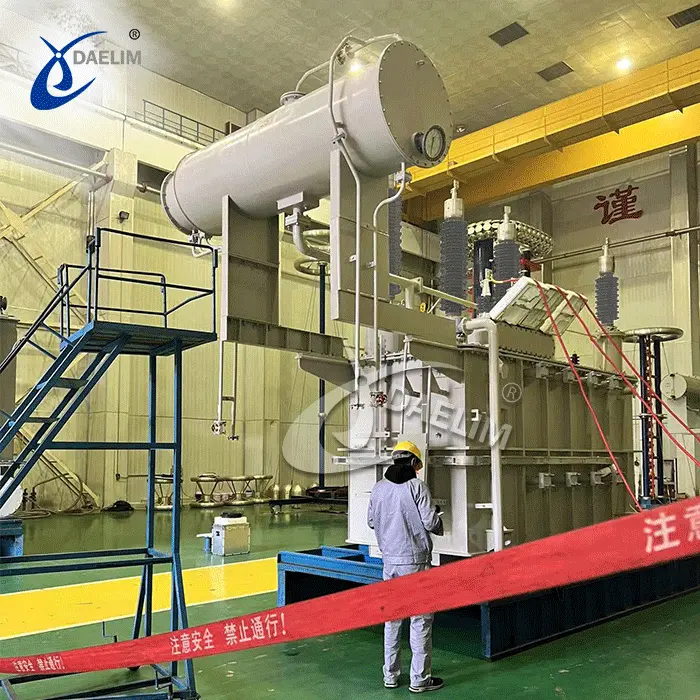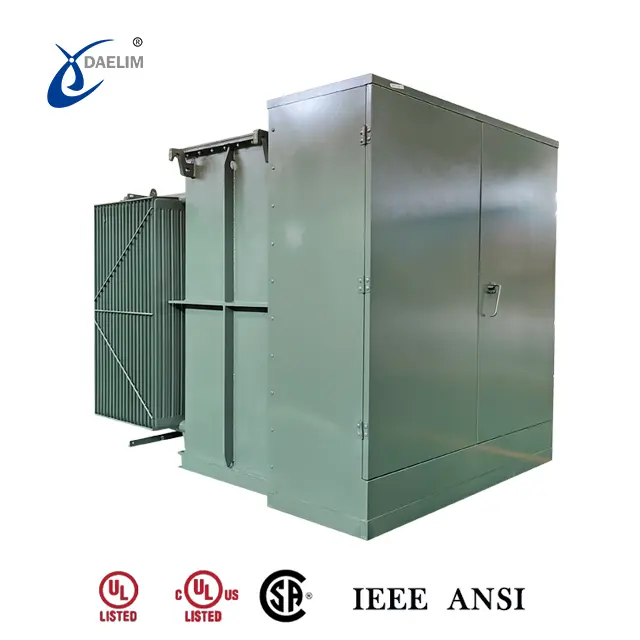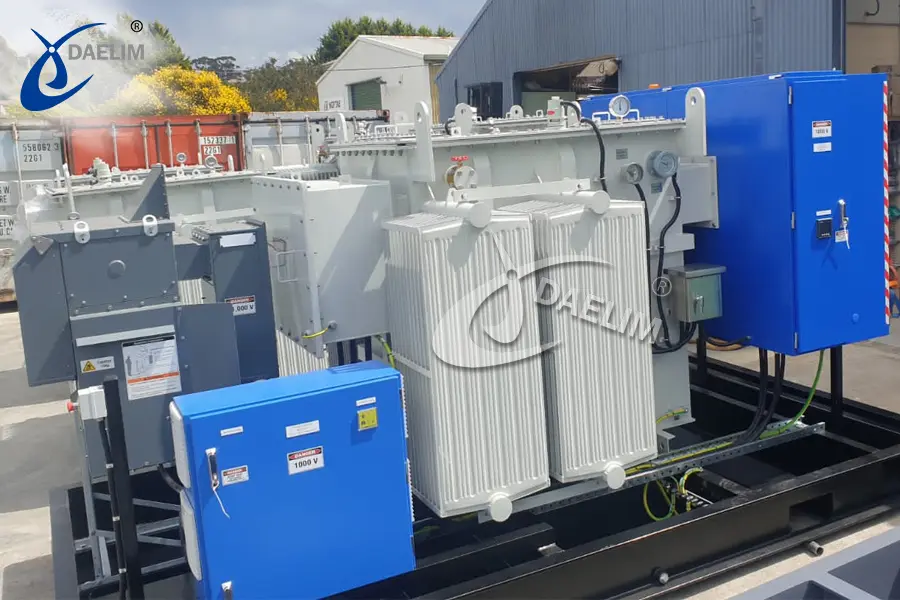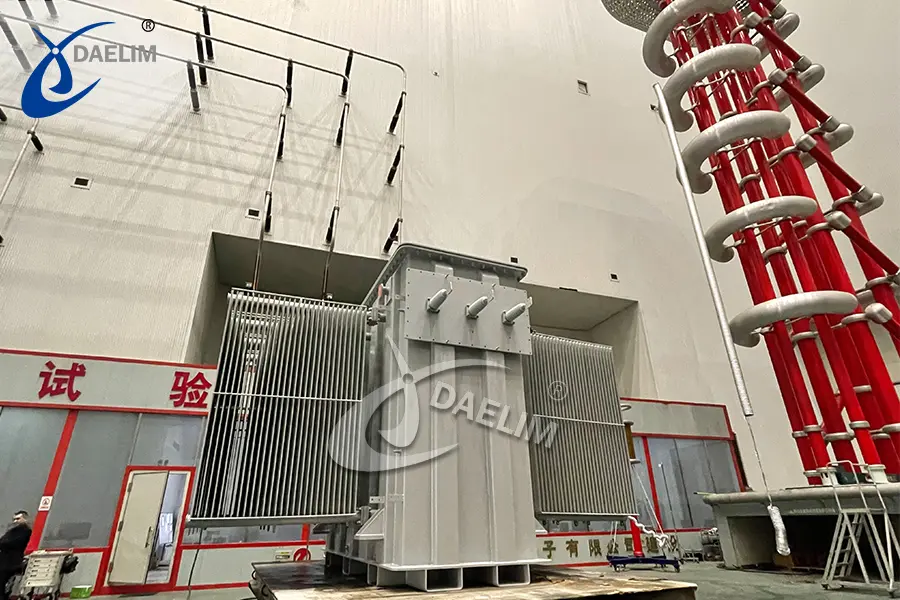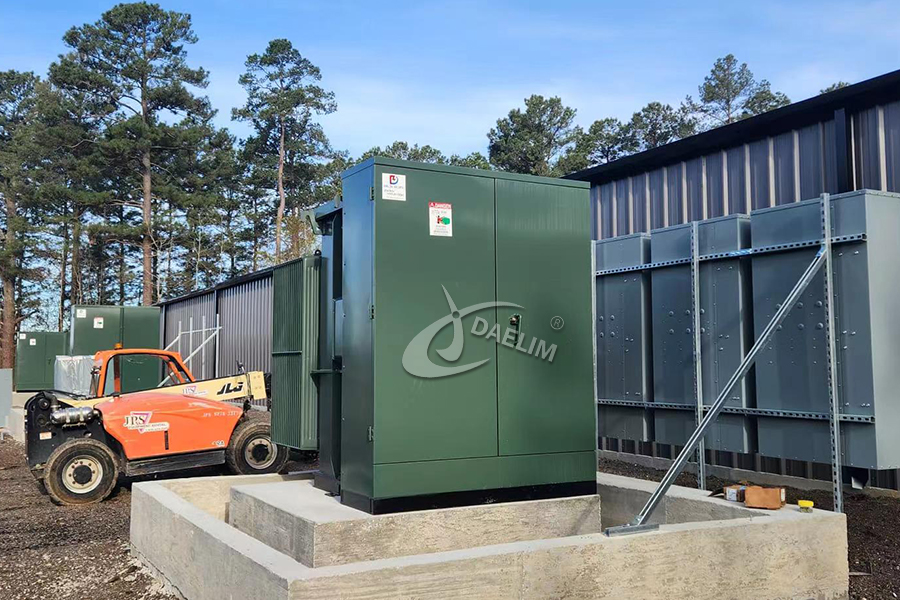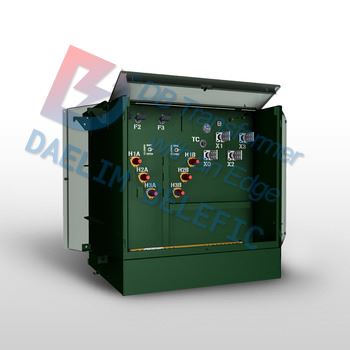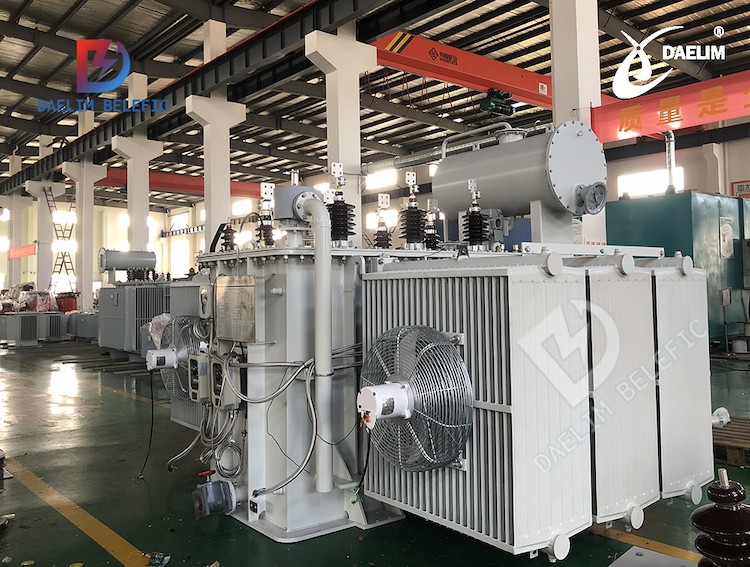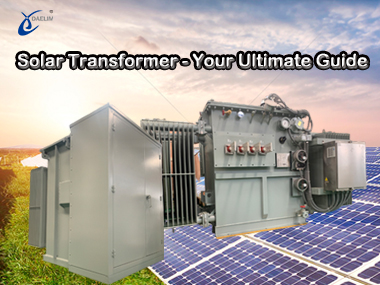Different Transformer Types and Their Applications
The transformer is a stationary instrument that is used to manage the voltage and current of an AC electrical supply. They play an important role in power systems and are used in vast applications.
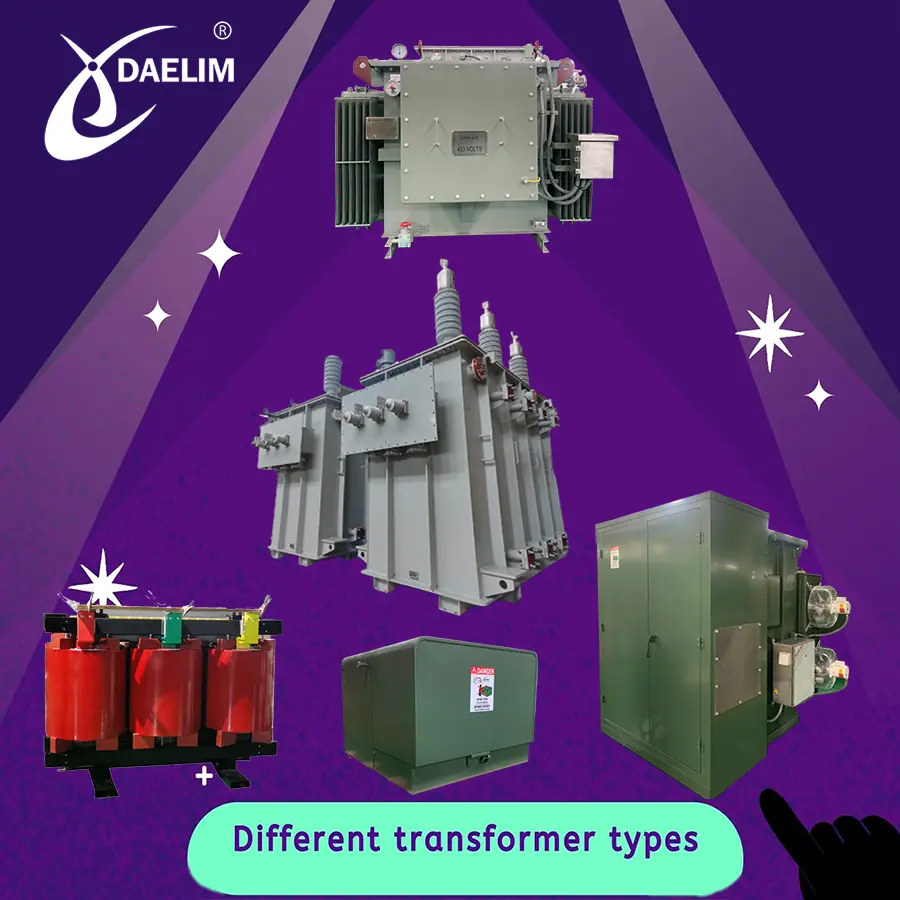
They can be classified into various types according to voltage level, core material, windings, and their usage. In this article, we will provide you with insights about the different transformer types and their applications.
What are the major types of transformers?
The major types of transformers are divided into four categories. These are the voltage level, core material, windings, and their usage.
According to its voltage level
Voltage levels of a transformer are determined by the number of windings on its primary and secondary sections. There are three subcategories under this type. The Step Up, Step Down, and Isolation Transformer.
Step Up Transformer
This type of transformer can convert voltage levels from low input voltage to high output voltage which is made possible by having more turns on the secondary windings.
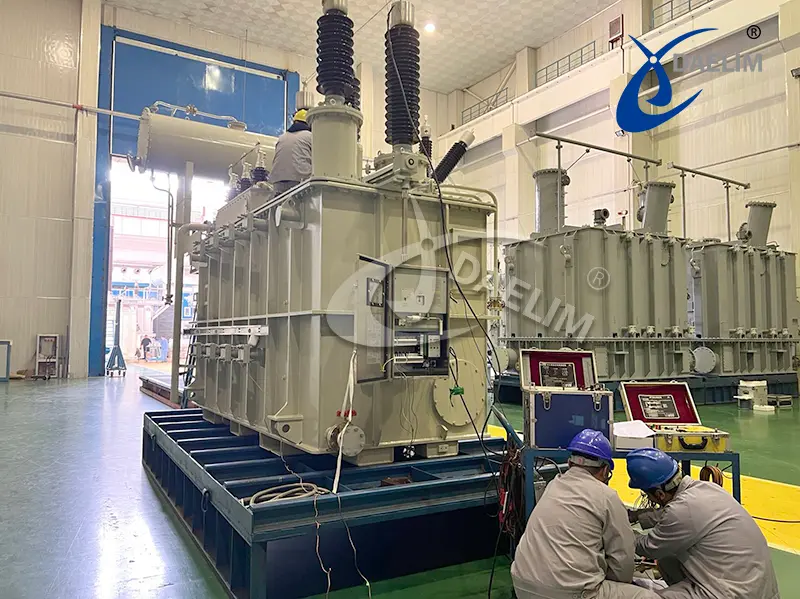
It is often used in power distribution systems where the voltage level has to be increased prior to distribution and it can also be used to connect generators to the power grid.
Reading more: Step Up Transformer VS Step Down Transformer
Step Down Transformer
This transformer type can receive high voltages in the primary and convert them to lower voltages in the secondary. Its output voltage can range from as low as 5V which is compatible with phone charging and up to 48V.
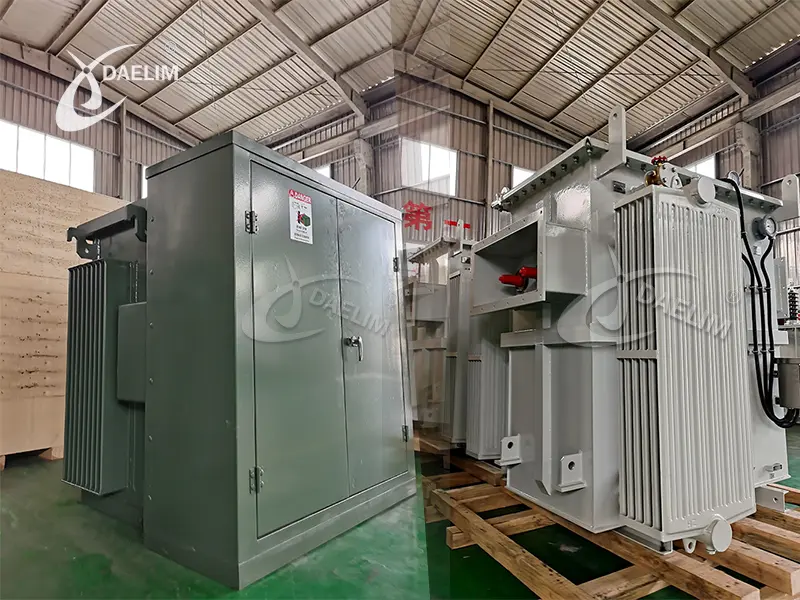
It is commonly used to step down high voltages from the grid before supplying it to the downstream area such as households and manufacturing plants.
Read more: Step Down Transformer: The Ultimate FAQs Guide - Daelim
Isolation Transformer
This transformer type has uniform windings across the primary and the secondary. Isolation transformers are literally used to isolate specific devices or equipment from the line.
This is primarily done to secure the equipment and the surrounding environment from potential noise and electric shock. It is commonly used in industrial, commercial, and medical applications.
According to its core material
The transmission of energy in the transformer is governed by the core material, structure, and corresponding flux density. There are two subcategories under this type, the Iron Core Transformer, and the Air Core Transformer.
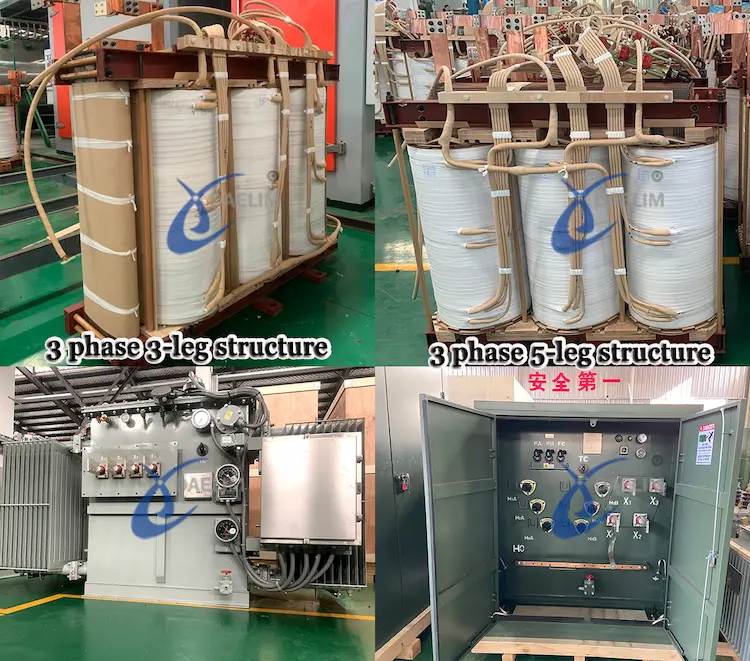 This transformer's core material is composed of several metal plates made of iron. Iron Core type transformer is known to have higher efficiency compared to Air Core type transformer since iron is ferromagnetic which leads to higher flux linkage.
This transformer's core material is composed of several metal plates made of iron. Iron Core type transformer is known to have higher efficiency compared to Air Core type transformer since iron is ferromagnetic which leads to higher flux linkage.
It comes in different constructions or individual laminations which can be E-shape, U-shape, L-shape, and I-shape.
Try for free: The Ultimate Guide to Core Type Transformers
Air Core Transformer
This type of transformer flux linkage across windings is facilitated by air alone. This results in lower mutual inductance, however, there is no magnetization lag and Foucault's current is eradicated.
According to its windings arrangement
Transformers can have different winding arrangements. There are three subcategories under this type.
Three Winding Transformer
This type of transformer is generally relatively high, with three winding compositions, with three voltages: high voltage, medium voltage and low voltage
Two Winding Transformer
Typical transformer set-up where there are two individual windings bounded magnetically. The primary receives power from the source while the secondary is routed to the load.
Auto Transformer
Unlike the typical transformer, these transformer windings are linked in series with a shared common coil. Voltage is changed based on the corresponding position of the center tapping.
According to use
The transformer can be used as power transformer, measurement transformer, and as distribution transformer.
Power Transformer
These are used to transport energy across substations and the grid that supplies power downstream before it goes to the final distribution system. It is mainly used to convert voltages from low to high which is vital in lowering power losses.
It usually comes in huge sizes that can handle ranges from 30kVA up to as high as 100 MVA.
Get it now: How To Choose The Suitable 110KV Power Transformer?
Distribution Transformer
Receives power from power transformers and converts it to lower voltages compatible with utility distribution. They are smaller in size anywhere lower than 200kVA.
This can further be classified according to how it is insulated, it can either be an oil-type or a dry-type transformer.
Reading on: How to choose the best distribution transformer?
What are the 5 applications of transformers?
Transformers application is wide, the five most common applications are the following:
Industrial
Manufacturing industries require different power supplies. In the steel industry, manufacturing plants are able to sustain their daily activities with the help of high-voltage transformers that are specialized to deliver very high currents at varying voltages. It is designed to manage massive mechanical, dielectric, and temperature demands to run a steel furnace.
Transformers do play an important part in the electrochemical industries. Electroplating is carried out smoothly with the aid of rectifier transformers. This transformer type is also essential in other industrial applications like smelting plants and rolling mills.
Transformers Solutions for Industrial and Commercial Buildings
Regulation
One of the fundamental applications of transformers is to regulate the voltage to stabilize power. It can regulate electric current to increase efficiency and protect electrical devices from damage caused by unexpected power surges.
Isolation
Transformers are also used for specific instruments that are required to be isolated for safety or other special requirements.
Modern Application
Transformers are not left behind when it comes to advancing technology. An example of an advanced application of transformers in modern times is charging large batteries used for electric cars.
Other modern applications include data processing, medical, aerospace, military support, communications, and blockchain.
Power Distribution and Transmission
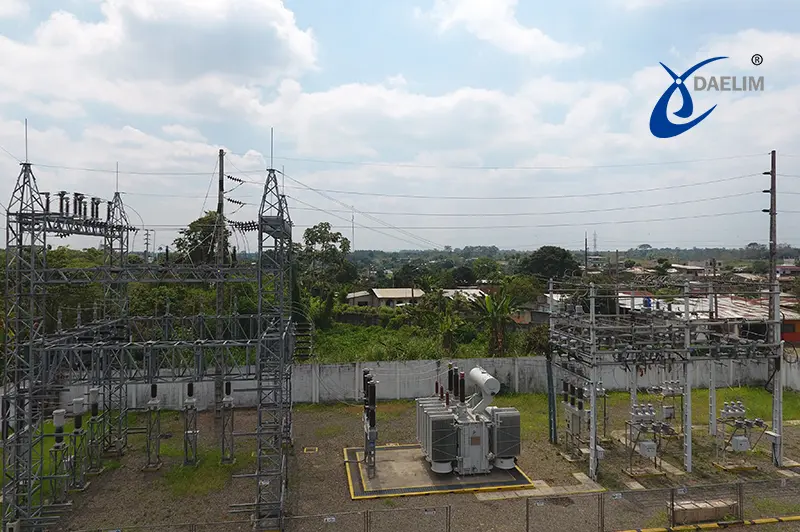
Transformers are deemed important for the power sector. It basically makes power available for domestic, industrial, and commercial use.
From the power plant, power transmission and distribution are made safe and affordable with the help of transformers. It secures the transmission of high voltages across the lines while another transformer is responsible for converting these high voltages to a level that is usable and safe for electrical devices.
Read my article on Transmission Transformer | At The Power Lines Core
Which type of transformer is most commonly used?
The most commonly used transformers are the power and distribution transformers. You might not recognize it but they are everywhere and anywhere where there is electricity.
From individual homes, small and big businesses, industrial zones, manufacturing and mining sites, to substations and large power grids.
How to choose the correct transformer type?
Choosing the right transformer could be a difficult task but not if you know what to look for. Below we have shortlisted the most important details you must know in a transformer before you can say that it's the right one for you.
Try for free: How To Purchase 3000kVA Transformer In USA & Canada?
Rated Power
This corresponds to the maximum current and voltage a transformer can render. Oversizing may be good but could also cause substantial losses.
On the other hand, cutting edges on the size is even worse. You might not notice it at first, but the windings get exhausted over time, which may implicate declining efficiency and shorter lifespan.
More Resource: Ultimate Guide To Transformer Sizes and Ratings
Primary and Secondary Voltage
The primary voltage refers to your source while the secondary voltage refers to the voltage requirement of your set-up, device, or equipment.
Frequency
This is expressed in hertz. To get the right transformer, it must be able to match the frequency of a particular electrical device or equipment during its operation.
Single Phase or Three Phase
These are other options you must consider, single phase transformers are more economical. They are easier to handle and maintain.
On the other hand, three-phase transformers are more powerful and suited for heavier power requirements.
Keep reading: 3 Phase Pad Mounted Transformer-Daelim Belefic
What type Daelim Transformer offer?
A wide variety of transformers range from small single-phase distribution transformers to HV power transformers. With over 20 years of manufacturing experience, continuously aim to serve every customer's needs.
As Daelim continues to innovate, we bring our service closer. With that, we have strategically installed local after-sales teams around North, South, and Central America so it's easier for you to reach us in case you need any assistance or if you have any inquiries. Here are some of the Daelim Transformers in demand.
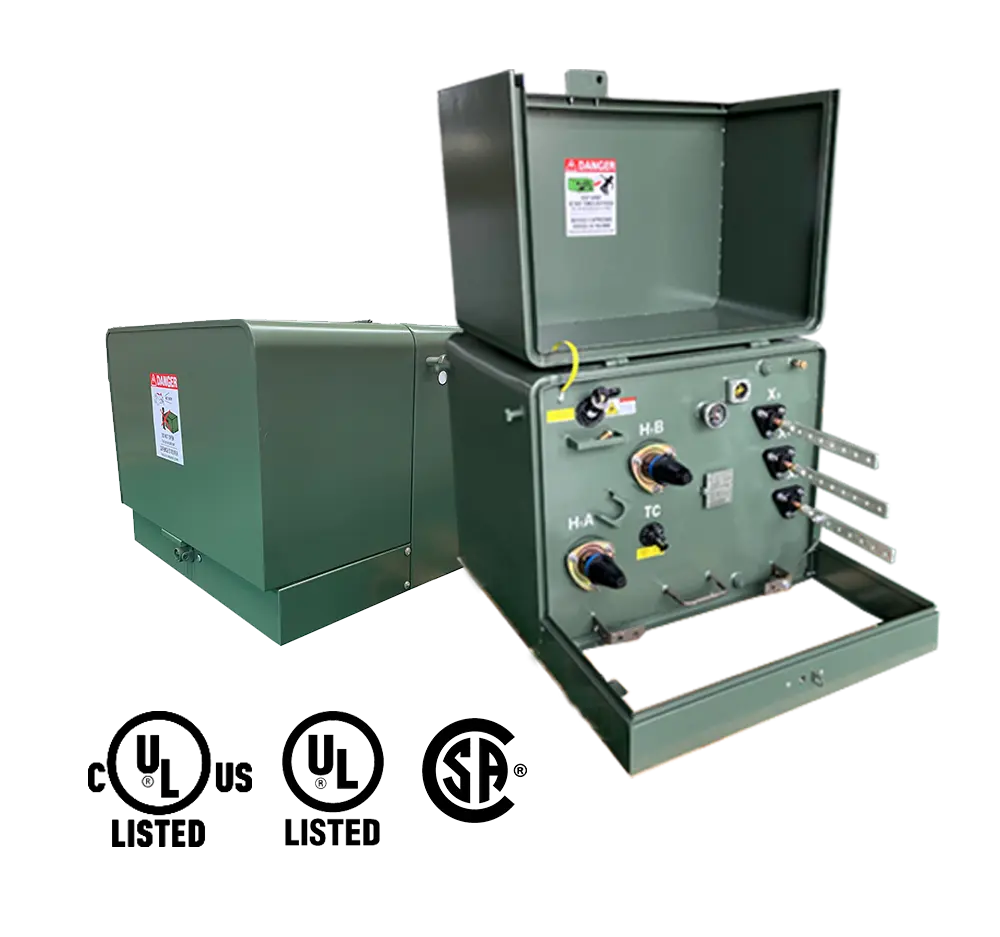
Capacity: up to 250 kVA
Primary Voltage: up to 34.5kV
Frequency: 50/60Hz
Cooling method: ONAN, ONAF
Standards: ANSI, IEEE, CSA, DOE, NEMA
Insulation Fluids: Mineral and Vegetable Oil
Applications: Residential,Utilities
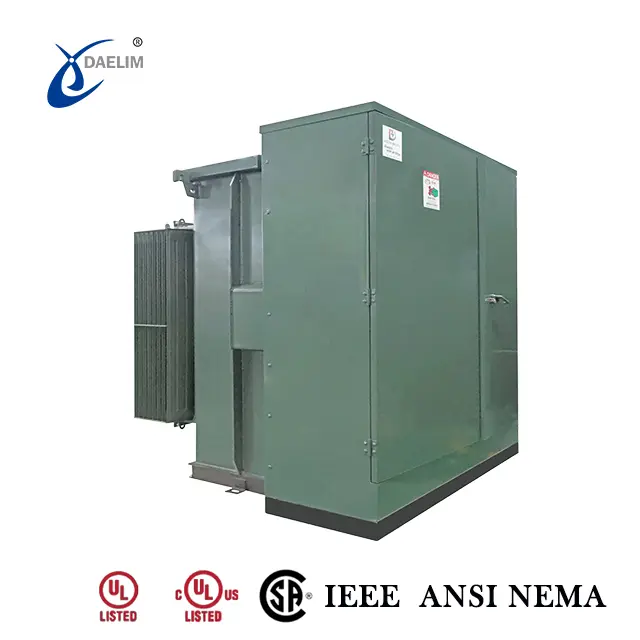
Our pad mounted transformers have a full range of UL listed
Capacity: up to 10 MVA
Primary Voltage: 44kV
Frequency: 50/60Hz
Standards: ANSI/IEEE, CSA, DOE, NEMA
Insulation Fluids: Mineral and Vegetable Oil
Application: Industry, commercial, new energy, BESS, EV Charging, utilities, blockchain, etc.
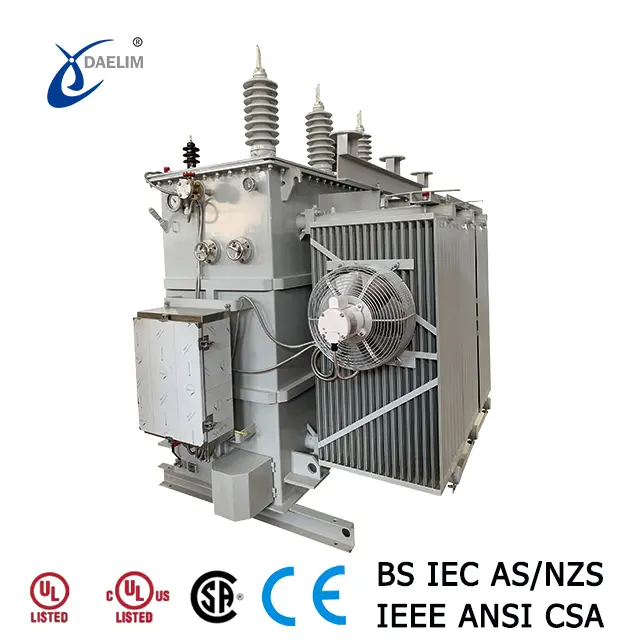
Capacity: 100 kVA to 20000 kVA
Primary Voltage: up to 35kV
Frequency: 50/60Hz
Standards: IEEE, ANSI, CSA, DOE, AS, IEC, NEMA
Certificates: UL, cUL, CSA, CE, FM
HV and LV flange connections
Gauges with contacts
Side-mounted or top-mounted bushings
Insulation Fluids: Mineral insulating oil, Envirotemp FR3 Fluid
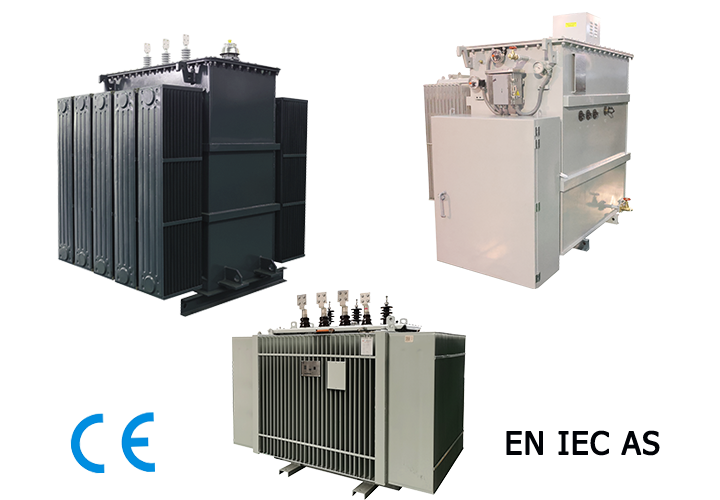
Distribution Transformer
Power rating: up to 3150kVA
Voltage: up to 36kV
Standards: 2021 Level 2 EU Directive 548/2014 and BSEN60076
• Modern technology
• Lower energy losses
• Avoided carbon emissions
• Shorter lead time
• Proven quality and reliability
• Long lifecycle with low maintenance
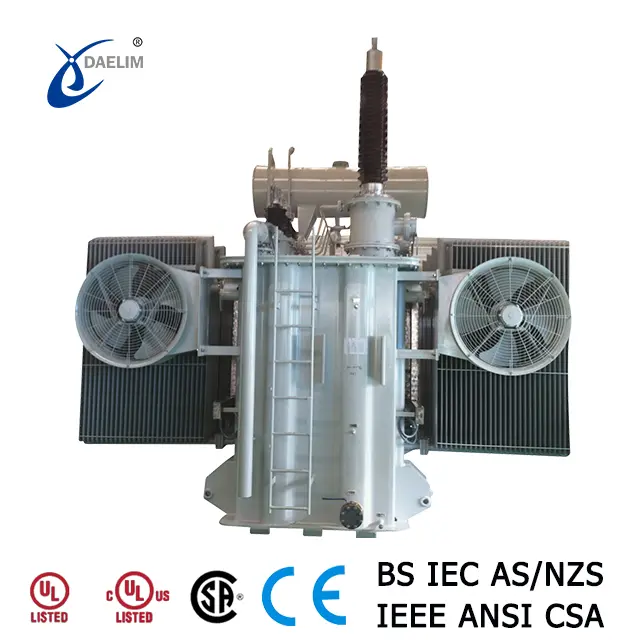
Capacity: up to 500 MVA
Primary Voltage: up to345 kV
Frequency: 50/60Hz
Low partial discharge
Low loss, Low noise
High reliability, Long life
Standards: ANSI, IEEE, CSA, IEC, AS/NZS, BS, NEMA
Insulation Fluids: Mineral Oil Inhibited | Not inhibited | Vegetable Oil
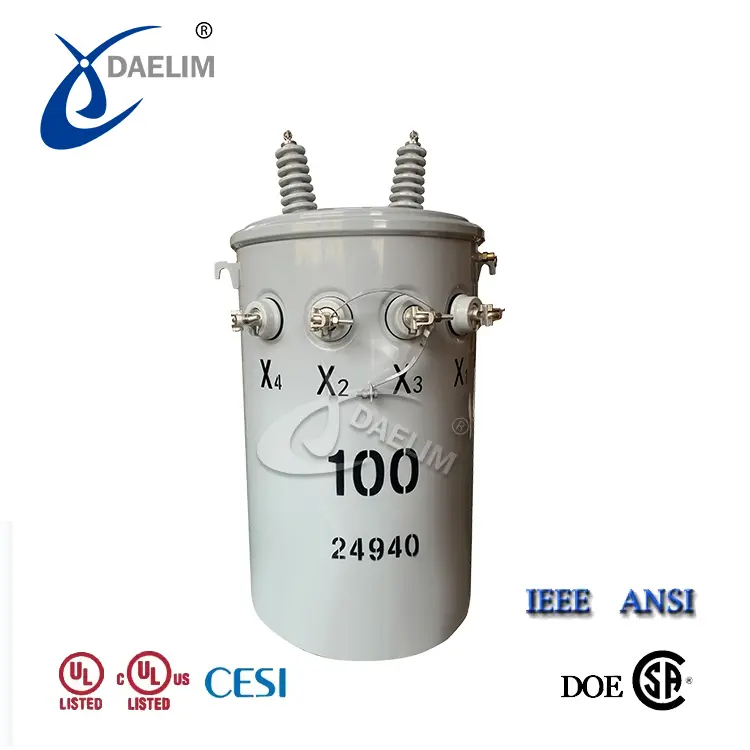
Type: Conventioal and CSP
Capacity: up to 333 kVA
Primary Voltage: up to 34.5kV
Secondary Voltage: 120 to 600 V
Frequency: 50/60Hz
Standards: ANSI/IEEE, CSA, DOE
Certificates: UL, CESI, SGS, ISO
Insulation Fluids: Mineral Oil and Vegetable Oil
Daelim transformers are UL/cUL, CSA, IEEE, and CESI certified. Well-designed and manufactured to attain the highest quality in accordance with international standards for transformers such as ANSI/IEEE, CSA, AS/AZS, DOE, NEMA, IEC, GOST, and or according to customer’s requirement.
Daelim Transformer is a trusted supplier and manufacturer of high-quality transformers. With a wide range of transformer types, capacities, and voltage options, we are committed to meeting your specific needs. Whether you require a customized solution or a standard product, DB Transformer delivers excellence in both product quality and professional services. Trust us to provide you with reliable transformers and exceptional customer support.
Related Products
Related Article
1500 kVA Transformer for Australian Mining Project
Introduce the 1500 kVA transformer tailored for Australian mining projects. The transformer operates in a three-phase configuration, with a total of four units deployed. Notably, its primary voltage stands at 11kV, while the secondary voltage is 1kV. Characterized by its compact size, emphasis on safety, and unwavering reliability, this transformer is meticulously designed and manufactured to meet the stringent requirements outlined in AS 60076 and AS efficiency value standards.Let's delve into the key features and specifications of this essential solution.
20MVA Power Transformer for the United States
This project involves the development of a 20 MVA three-phase power transformer tailored for the United States market. The primary voltage is 24.94kV, and the secondary voltage is 4.16kV, indicating it functions as a step-down transformer. The design and production fully comply with IEEE C57.12.00 standards and have passed third-party UL team testing. All accessories also adhere to IEEE standards. FR3 vegetable oil serves as the insulating liquid for the transformers.
2600 kVA Pad Mounted Transformer For Blockchain In Kansas
This morning, I received the on-site photos of the pad-mounted transformers from the customer, and I was overwhelmed with excitement and joy. These pad-mounted transformers are installed at a 20MW blockchain site in Kansas, USA. A total of 5 sets of 2600 kVA pad-mounted transformers, all UL-listed, are being deployed at this site. Currently, 3 sets have already been installed onsite and are scheduled to be powered on imminently.
Basic Guide for Grounding Transformer
In the three-phase power system, grounding transformer plays the role and function of auxiliary transformer. The function of a grounding transformer is to provide grounding mode for ungrounded delta connect or wye connect. Therefore, a ground transformer is also a very important part of the power grid grounding system.
13.8 kV 10.5 MVA Substation Transformer for Ecuador
A customer from Ecuador contacted Daelim Transformer for a 10.5MVA substation transformer (13.8kV high voltage, 2.4kV low voltage). Daelim Transformer provided a customized solution, conducted virtual factory tours, ensured rigorous quality control via video inspections, and offered post-delivery online training and ongoing support, fostering a successful partnership.
Solar Transformer, Get The Best Price
Solar energy is the most abundant energy source on earth, and contemporary solar energy can be used to produce other renewable energy sources. We can convert solar energy into electricity. At present, there are two main conversion forms in the world, one is solar photovoltaic power stations, and the other is solar thermal power stations. Whether it is photovoltaic power generation or solar thermal power generation, solar transformers are used.

